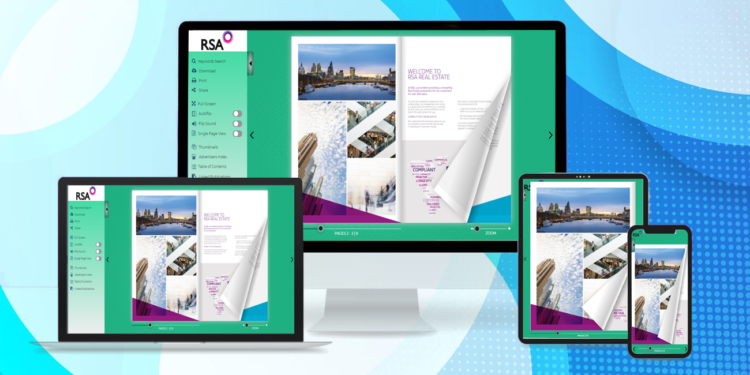Static PDFs are quickly becoming a thing of the past. Readers want content that is interactive and interesting and works well on all devices. PDF to digital magazine software, or just digital magazine software, turns your old PDFs into interactive magazines that grab people’s attention and get them to interact with them.
You don’t have to feel overwhelmed when you convert your existing PDF content. You can make professional digital magazines that keep your brand’s look and feel while giving users a great experience if you use the right tools and methods.
Pick the Right PDF to Digital Magazine Software
Not every tool for converting is the same. Look for software that lets you easily import and edit content by dragging and dropping it. This feature cuts down on the amount of time your team has to spend learning how to use it and saves hours of manual work.
Mobile optimization makes sure that your magazine looks great on phones and tablets. More than 60% of people who use the internet do so on their phones.
Interactive features like videos that play automatically, links that you can click, and audio clips that make static content more interesting.
Using analytics to keep an eye on how readers act, which pages are most popular, and how engaged they are. This information helps you make your future content better and learn more about your audience.
Improve your content before you convert it
Begin with good source materials. PDFs that are clean and well-organized convert better than those that are messy or poorly formatted.
Text that is clear is important. Make sure that the fonts you use are easy to read and the same throughout the document. Arial and Helvetica are examples of sans-serif fonts that usually look better on screens than decorative fonts.
For clear display on high-resolution screens, the image resolution should be at least 300 DPI. To find the right balance between quality and loading speed, compress images the right way.
A professional look comes from keeping the layout of the pages the same. Keep the margins, spacing, and alignment the same on all pages.
Make the conversion process more interactive
Digital magazines are best when they have more than just static content. Add interactive features that make readers want to get involved:
Links can take readers to more information, product pages, or articles that are related to what they’re reading. Use them wisely to help your readers through your content journey.
By integrating social media, readers can share interesting articles from your magazine right away. Add buttons for sharing on social media to important pages or articles.
Video and audio content breaks up pages that are full of text and gives people more than one way to get information. Short, relevant clips often do better than long presentations.
Pop-up content boxes can draw attention to important information, show off products, or get feedback from readers without stopping the main content from flowing.
Check on a lot of different devices
Your digital magazine needs to work perfectly on all kinds of screens and operating systems. Make sure to test on:
• Desktop computers with different browsers
• Tablets in both portrait and landscape modes
• Smartphones with different screen sizes
• Different operating systems (iOS, Android, Windows)
Make sure that loading times, navigation, and visual consistency are all good on all platforms.
Check your progress and make changes
To find out how well your converted magazine is doing, keep an eye on these key performance metrics:
Page views tell you what content your audience likes. Pages with a lot of visitors are often signs of successful topics that should be expanded.
The amount of time spent on each page shows how engaged the reader is. Pages that people stay on longer usually have interesting content or useful interactive features.
You can tell how well your conversions are working by looking at the click-through rates on embedded links and calls to action.
Shares on social media show that readers think the content is good enough to tell other people about.
Use these tips to improve your content strategy and conversion process for future publications.
Conclusion
Changing PDFs into digital magazines gives you new ways to reach your audience and share your content. Modern conversion software has a lot of advantages over traditional PDF publishing. For example, it has interactive features, works well on mobile devices, and can analyze data.
Do a simple project first to get used to the process of converting. As you get more comfortable, try out more advanced interactive features to make digital experiences that are really fun.
Are you ready to move? Pick PDF to digital magazine software that fits your technical skills and publishing goals, and then start turning your static content into digital magazines that readers will love.
Enhanc PDF to digital magazine software is a great piece of magazine software that you can try for free for 14 days.













